The cultural phenomenon that is the 1968 horror film "Night of the Living Dead" has long been promoted using the countenance of one of its more noteworthy ghouls: poor little nine-year-old Karen Cooper, who found out the hard way that when you get bitten by a zombie, that means you're already well on your way to becoming one.
The actress who played her is Kyra Schon. Her father, Karl Hardman, was one of the producers of "Night of the Living Dead", and also starred in the film as the antagonistic blowhard Harry Cooper. Nine years old at the time of the movie's filming, Kyra was a natural choice to play Harry's young daughter Karen, and although she only has one speaking line in the film (feverish from a zombie bite, she moans "I hurt!"), she features strongly in the film's shocking climax: presumably having died from her ghoul-inflicted wound, Karen becomes a ghoul herself and cannibalizes her father's remains, then viciously stabs her mother to death with a cement trowel.
Karen Cooper may have been a little anti-social, but Kyra herself is well loved by "NOTLD" fans, who greet her at horror conventions and frequently display tattoos of her ghoulish character proudly engraved on their bodies. We sat down so I could ask her some questions about what the experience of making the film was like for her, as well as what it means to the people for whom the classic film holds an eternally morbid fascination.
______________________________________________________________________
Groovy Doom: Fans of the movie, and I'm sure those who were traumatized by it, all seem to be able to talk about the first time they ever saw "Night of the Living Dead". Everybody remembers that, it was sort of ground zero...Kyra Schon: Where were you when Kennedy was shot?
GD: ...exactly! I want to go even further back though, when was the first time you became aware of the project and the creation of the film?KS: It was early in 1967, I think. My mom woke me up for school one morning, and she said "Honey, you're going to flip...you're going to be in a movie." (laughs) And I said, "What?" And she said "Dad is co-producing this new movie and he's going to talk to you about it, and he wants you to be in it."
So instantly, you know, life changes. I guess I saw him later that day or the next day, and he explained it was a horror movie and I was going to be playing this little monster, creature, thing....I don't remember exactly what he told me about her, but I remember just being beside myself like, oh my god, my fondest wish had come true. I was watching horror movies from the time I was four years old on "Chiller Theater" [a
wildly popular weekly Pittsburgh horror host show whose host, Bill Cardille, also appears in "Night of the Living Dead" as a TV reporter]. At that time, "Chiller Theater" was on Saturday afternoon, and it was accessible to me. My best friend just up the street and I used to watch it, every Saturday afternoon we'd curl up in the same chair and watch these schlocky movies and be thrilled and terrified and amused. It was so vastly entertaining for us, and so I thought wow, I can be one of those monsters, that's great.
GD: Did you know what the movie was about?
KS: I don't know if I knew at that time. He told me that I was gonna stab Marilyn, and that I was gonna eat his arm. I don't remember what my reaction was, I guess I was just like "OK yeah, whatever, that's fine."
GD: Who explained to you what cannibalism was?
KS: (laughs) Well, that would have been my dad.
GD: You were young!
KS: Yeah, I was 9. I think maybe kids are more accepting of things because they don't have anything to compare it to. I didn't realize that we were breaking new ground because I didn't know everything that came before. I had seen "Frankenstein" and "The Mummy" and "The Wolf Man", "Little Shop of Horrors", those kinds of things. In that repertoire, there was nothing at all like what we were doing, but I didn't know that it was new.
GD: Cannibalism really freaks people out, at least it did when "Night of the Living Dead" was made.
KS: Well you know, it's not really cannibalism when you're a zombie. You're kind of not the same species anymore.
GD: What do you remember about being on the set?
KS: My scenes weren't very interesting because until I met Duane on the first floor, there was nobody in the scenes with me. I was lying on the table, I said "I hurt", and that was all. When I stabbed Marilyn, she wasn't even in the room with me, I was stabbing into a pillow. So there was no real interaction. There was no sound, that was looped in later, and I asked my dad "How long should I be doing this?" and he said "Keep going, keep going, keep going..." I've been told it was 14, and I've since counted and I stabbed the pillow 14 times.
A lot of it was really kind of boring. The scene where Harry and Helen are arguing in the basement, that whole "Who's Afraid of Virginia Woolf" vibe, it was so miserable because it was much longer. It was
so much longer! And I think they had written their own dialogue, which was....(dramatic eye roll)...it was brutal. And I'm lying there on the table thinking "I wonder if anybody has ever died of boredom? I am so bored!" And then they cut all of that, thank god. That's why that weird jump cut is in there, if you know it's in there you'll know to look for it.
My dad and Marilyn were doing the makeup, and they were doing wounds on some of the ghouls with mortician's wax, and it looked really cool, and I wanted one. I said "Can I get a wound, too?" and my dad said "No. It just doesn't go with the story." I just had a bandage covering...nothing! I got really good at doing those wounds after the movie, on my friends and on myself!
GD: Did George Romero give you direction, or was it your dad?
KS: My dad gave me direction. George probably figured I would take direction more readily from my dad than from a stranger. George couldn't have been nicer, though, there is nothing intimidating about him at all. He's just a big friendly teddy bear of a man, and I liked him a lot. He's just a great guy.
GD: Why do you think it is that your character is so well known and iconic, what is it that makes her fascinating to fans of the film?
KS: I think because she was the first of her kind, she was the first kid zombie. She killed her mother, which is a taboo, so is eating her father's arm which is really kind of gross. I think that's why she became so iconic, because she blew people's minds. She was not a little girl full of sugar and spice...well, maybe she started out that way, but suddenly we couldn't relate to this thing she became, she still looked like a little girl but now she wanted to eat you.
GD: Your image is so closely associated with the film, too.
KS: It certainly is, it's everywhere. When I go to conventions and I see it, I'm used to seeing it. I see people's tattoos and it gives me a thrill, it's amazing that someone tattooed my face on their body. But when I'm
not at a convention and I see it, I just want to jump up and down and go "Look, it's me!" Out here in the world, it's really weird to see it.
When I went to see "28 Days Later", I went with a friend of mine and we were standing in line, and there was a guy in front of us wearing a leather jacket with my face painted on the back. My friend nudged me and said "Are you gonna tell him?" But I didn't because, why would he believe me? (laughs) He would have been like, "Sure!"
GD: Do you remember the first film that terrified you?
KS: I've tried to remember, and I just don't know. But the one that sticks with me the most is "The Crawling Eye", aka "The Trollenberg Terror". It's still one of my favorite movies of all time, I love it. I don't know what it was about that movie, but it really stuck with me. I still do weird little sculptures and jewelry pieces with that motif. It's awesome and it's held up pretty well. When I watch it now, I try to watch it objectively, and it's a good movie.
And of course I love "The Wasp Woman". I loved "Attack of the 50 Foot Woman", that was great. The silent version of "Phantom of the Opera" really scared me, and "The Mummy" scared me a lot. "Frankenstein" didn't scare me, I felt sorry for him. "The Wolf Man" I felt sorry for, because he was like a dog. He was kind of a victim, I thought I could get along with him, he was cool. "Dracula" didn't scare me either, because Bela Lugosi's accent was a lot like my grandfather's accent, and that wasn't scary. I wasn't ever really afraid of vampires or werewolves, but the Mummy was the one that you really couldn't reason with. He was just sort of singularly focused on a task and no matter what got in his way, he was going to accomplish that.
GD: Do you still have any memorabilia from the film, like your costume?
KS: No, the costume was really my own dress, and that was given away to the Salvation Army after I outgrew it. The fishnet stockings I don't have anymore, either, those were mine. I was wearing off-white fishnet stockings. It's pretty funny, with that baby doll dress...I was quite the trendsetter.
GD: Someone out there got a priceless piece of movie memorabilia, and they didn't even know it.
KS: I sold the invitation to the premiere, and the bandage, a couple years ago, but some friends of mine have that stuff, so I can go visit if I feel the need. I still have the music box that you hear in the film. The box in the movie that actually spun around, that didn't have any sound, so they used my grandmother's music box for the sound. It was the stunt music box! It's broken, I have to get it repaired. I think I still have some of the makeup, too.
My dad had a lot of that stuff, and I don't know where it went after he passed away. A lot of it belonged to him originally, like the coat tree was his. So was the tire iron that went into the ghoul's head, the one played by John Russo. The radio was originally his parents, they bought it in new in 1937 or something.
GD: When did you first see the film, at the premiere?
KS: Yeah, but when I saw it none of it surprised me, so maybe I'd seen bits and pieces of the film before that. I was allowed to invite a couple of my friends to it who were close to me in age, it was just a few days before my 11th birthday. I spent most of the movie watching their reactions to the various scenes, because they were shrieking and jumping out of their seats, which I thought was hilarious. But none of it scared me. The only thing I didn't like when I saw it was seeing my dad get shot. It was uncomfortable, I didn't like that, even though I was there for the filming of it and it was actually really funny. When he was doing his death scene, he clutched the coat tree, and each time he would try and fall down the steps he'd get tangled in the coat tree and it would follow him down the steps. Everybody was laughing so hard they were in tears, they'd done it so many times, but then seeing it afterwards, it still bothered me.
GD: What did your friends tell you about the movie after they'd seen it?
KS: They loved it, they were scared! They thought it was pretty cool that they got to see it.
GD: I'm sure they loved your big moment with the cement trowel.
KS: (laughs) Yes, they did!
GD: To me, that's the most nightmarish moment in the film. That's what takes it way over the line from just being a horror movie into something truly subversive, this little kid murdering her own mother in a creepy basement. It was so shocking and dark.
KS: I think that's kind of why people were walking out feeling shell shocked afterwards, because they didn't expect to see something like that. But I still think that it's not as disturbing as "The Bad Seed", which was a decade before, because she knew exactly what she was doing.
GD: Absolutely, she liked it.
KS: For her, it was murder. For Karen Cooper, who had become a ghoul, it was just a biological imperative, rather than just living out her sociopathic dreams! But it's pretty gruesome, anyway. People have asked me, why did she pick up the trowel and then kill her mother and walk away? Why didn't she eat her? Presumably, ghouls want to kill you because they want to eat you, but she didn't want to eat her, she just wanted to kill her. So what was that about? Maybe there was a little "Bad Seed" in her, too.
____________________________________________________________________
Here's a link to Kyra's personal website,
ghoulnextdoor.com, where you can browse some of the merchandise and memorabilia she offers, items related to "Night of the Living Dead" as well as her own fantastic handcrafted jewelry. You can also find this at her Etsy shop,
StoneHouseArts.
















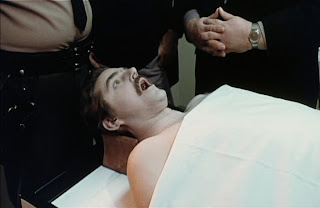


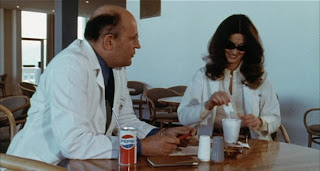







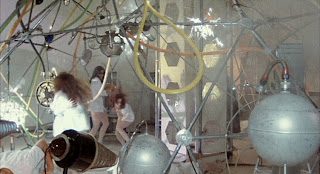
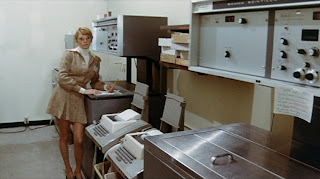





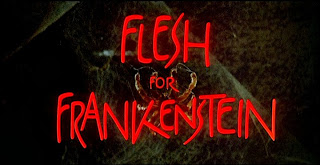




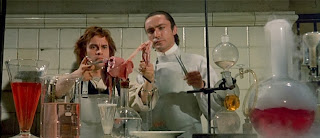
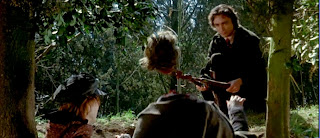




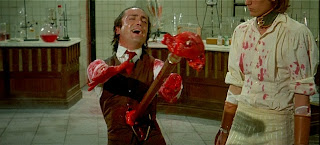

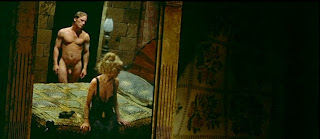

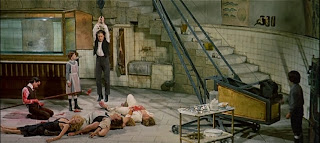





























.jpg)










































.jpg)




.jpg)


































































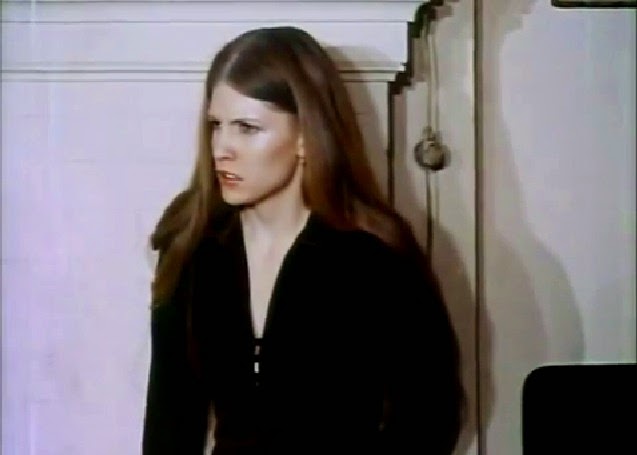












































.jpg)

.jpg)
